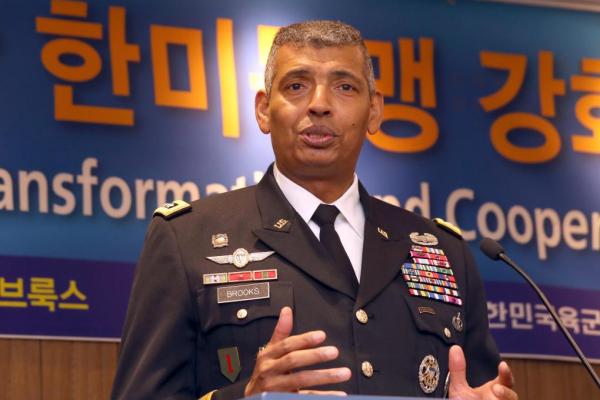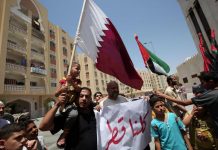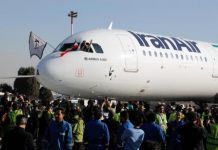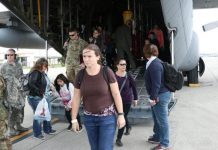
SEOUL, South Korea, Nov. 4 (UPI) — Credible military capabilities should be in place to back up diplomatic and economic sanctions to rein in North Korea‘s nuclear and missile threats, the chief of the United States Forces Korea said Friday.
“The military is in support of these diplomatic and economic actions that are intended to create sufficient pressure to cause [North Korean leader] Kim Jong Un to stop and reverse what it is he is doing so far,” Gen. Vincent Brooks said in his lecture to a group of retired and sitting South Korean military commanders.
“As you can see, more pressure is needed, but so is more diplomacy and more economic actions,” the commander of 28,500 American forces stationed in South Korea said. “And it has to be done on the foundation of credible and ready military capabilities, and that’s what we are focused on every day in the Republic of Korea-U.S. alliance.”
“We know it’s not the only answer to solve the problem by itself,” he said of the military capabilities. “But without it, it’s very difficult for diplomacy and economic actions to gain any kind of leverage or traction,” Brooks said.
He said that Kim is pursuing a strategy to create division among five nations working together to pressure North Korea, referring to South Korea, the United States, China, Russia and Japan.
“I think he knows that when countries around him are operating in a cohesive way focused against him, it will be very difficult for him to resist,” he said, adding, “So the counter to his strategy is cohesion.”
Brooks also called for defense buildup in Seoul and areas surrounding the capital, highlighting that the recent deployment of the U.S. Terminal High Altitude Area Defense system dispelled security threats in the southern portion of South Korea.
“On the Korean Peninsula, several things can be held at risk by North Korea. But with the deployment of things like THAAD, that changed what it is Kim Jong Un can hold at risk, especially the southern portion of the peninsula,” Brooks said. “This is how it should be viewed.”
“We need to make sure we are adding to the defense that already exists to protect the population in Seoul and the metropolitan area … so that Kim Jong Un cannot hold this population at risk.”
Also touching on the ongoing efforts to transfer the U.S.-held right to control wartime operations of Korean troops back to Seoul, he stressed the importance of enhancing necessary capabilities on the part of Seoul.
“We have to also think about those critical military capabilities that are necessary for the ROK to be able to exercise full control of the alliance forces, the U.S. and South Korea, in time of war,” he said, adding it requires South Korea’s investment, commitment, science and technology, as well as research and development.
Also extolling South Korea’s contribution to cover more than 90 percent of the funds needed to create the new U.S. military complex in Pyeongtaek, Camp Humphreys, he also said, “It will be the first place I will take the president of the U.S. next week,” referring to President Donald Trump‘s visit to South Korea.





